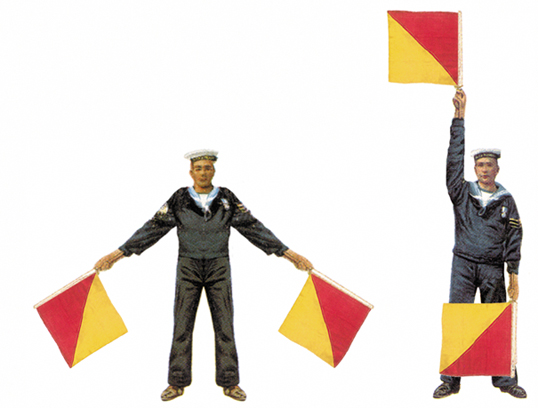This U.S. style flag replaces the white stars in the blue canton with a large peace symbol. This forked symbol was designed for the Direct Action Committee Against Nuclear War (DAC) and was adopted as its badge by the Campaign for Nuclear Disarmament in Britain, and originally was used by the British nuclear disarmament movement.
This symbol was later generalized to become an international icon for the 1960s anti-war movement, and was also adopted by the counterculture of the time. It was designed and completed in Britain, February 21, 1958 by Gerald Holtom, who was a professional designer and artist for the Easter march planned by DAC from Trafalgar Square, London, to the Atomic Weapons Research Establishment at Aldermaston in England. He designed the logo of the Campaign for Nuclear Disarmament (CND), more commonly known as the peace symbol.

Semaphore letters N(uclear) and D(isarmament)
The symbol itself is a combination of the semaphoric signals for the letters "N" and "D," standing for Nuclear Disarmament. In semaphore the letter "N" is formed by a person holding two flags in an upside-down "V," and the letter "D" is formed by holding one flag pointed straight up and the other pointed straight down. These two signals imposed over each other form the shape of the peace symbol. In the original design the lines widened at the edge of the circle.
The symbol is often erroneously credited to Bertrand Arthur William Russell, 3rd Earl Russell, (18 May 1872 2 February 1970), who was a British philosopher, historian, logician, mathematician, advocate for social reform, pacifist, and prominent rationalist. Russell served as the President of the CND during this time.
This flag was made by the Paramount Flag Co., San Francisco, CA, in the late 1960's. Flags like this were a popular counter-cultural response to the unpopular War in Vietnam. This is a very early Peace Flag, and can be dated by the 3' x 5' size marking on the lower reverse of the hoist. Paramount moved these markings to the obverse in the 1970's. The markings on the hoist include text ink-stamped on hoist: FEEDY and 'makers size 3X5ft. blue heat transfer' in the lower reverse hoist.
The ink stamped FEEDY is a post wholesale marking done by the business that acquired the flag from Paramount Flag. Paramount Flag did not sell to the general public, and only sold flags to dealers, who in turn resold them to other retailers or the general public.
Exhibition History:
First Presidio Exhibit
(ZFC1524)
United States Peace Flag
Second Presidio Exhibit, 2003 - Gallery VI
(ZFC1524)
United States Peace Flag
Publication History:
Madaus, Howard M., Dr, Whitney Smith, The American Flag: Two Centuries of Concord and Conflict. Santa Cruz: VZ Publications, 2006, p. 137.
Provenance: Acquired by the Zaricor Flag Collection in 1979 from J&S Surplus & Outdoor Store, Hwy. 1 & N. Struve Road. Moss Landing, CA. 95039
ZFC Significant Flag
Item is Framed
Souces: